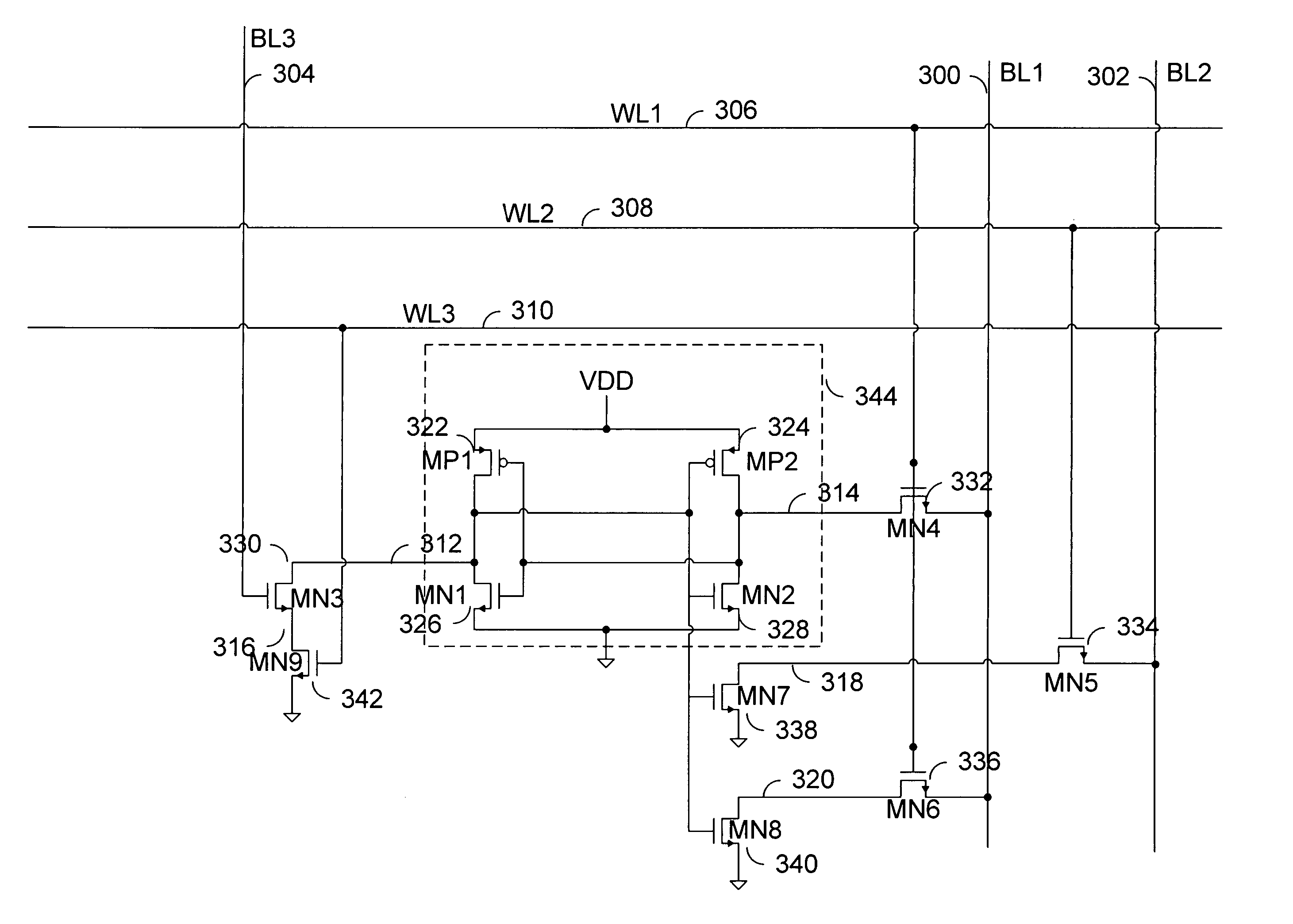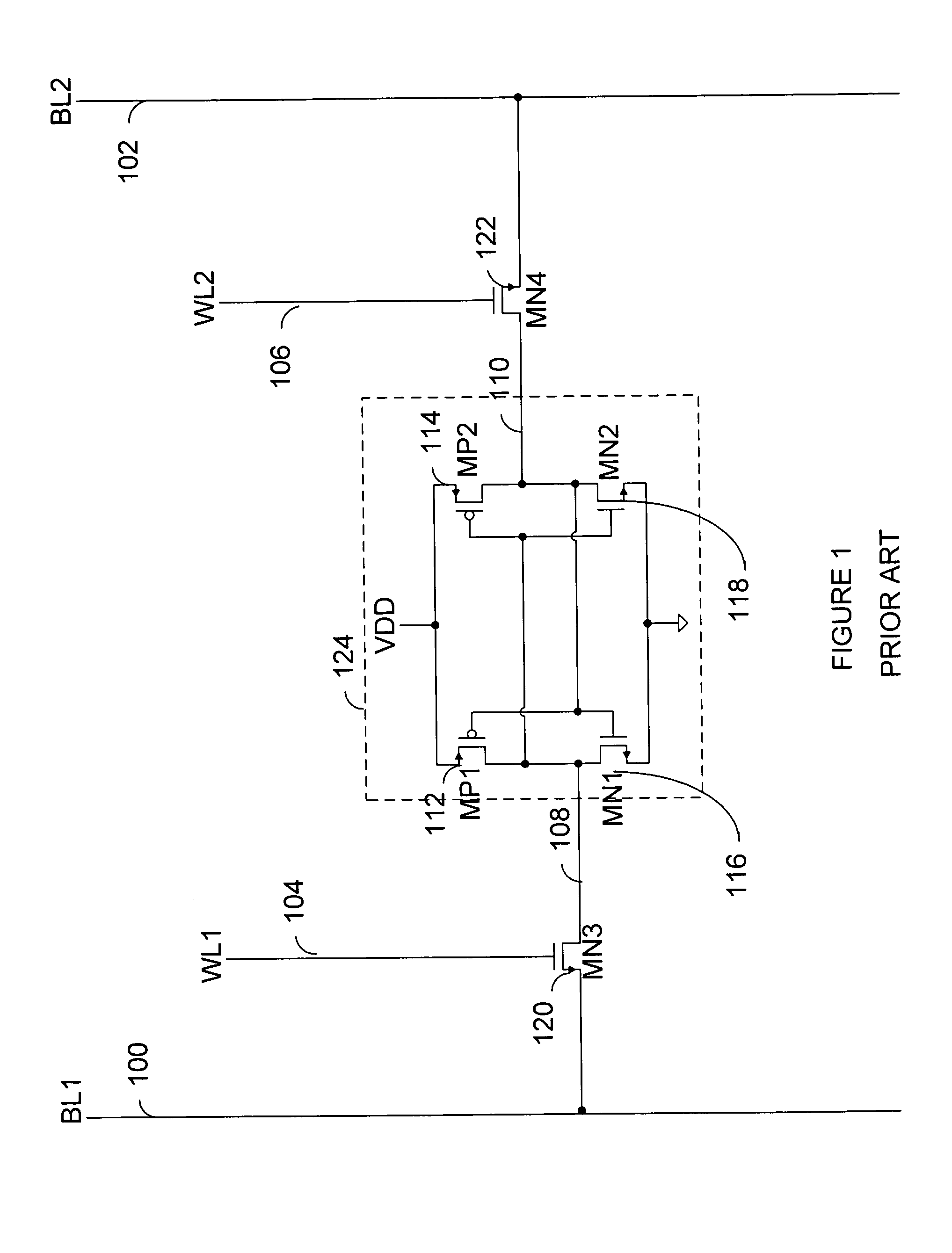Dual-ported read SRAM cell with improved soft error immunity
a dual-port read and soft error technology, applied in the field of sram cells, can solve the problems of soft error, soft error, alpha particles, etc., and achieve the effect of improving the soft error ra
- Summary
- Abstract
- Description
- Claims
- Application Information
AI Technical Summary
Benefits of technology
Problems solved by technology
Method used
Image
Examples
Embodiment Construction
[0017]FIG. 1 is a schematic of a six transistor dual-port read SRAM cell. Bitline, BL1, 100 is connected to the source of NFET (N-type Field Effect Transistor), MN3, 120. Bitline, BL2, 102 is connected to the source of NFET, MN4, 122. Wordline, WL1, 104 is connected to the gate of NFET, MN3, 120. Wordline, WL2, 106 is connected to the gate of NFET, MN4, 122.
[0018] The drain, 108, of NFET, MN3, 120 is connected to the drain of PFET (P-type Field Effect Transistor), MP1, 112, the drain of NFET, MN1, 116, the gate of PFET, MP2, 114, and the gate of NFET, MN2, 118.
[0019] The drain, 110, of NFET, MN4, 122 is connected to the drain of PFET (P-type Field Effect Transistor), MP2, 114, the drain of NFET, MN2, 118, the gate of PFET, MP1, 112, and the gate of NFET, MN1, 116. A cross-coupled latch, 124, in this example, includes PFET, MP1, 112, MP2, 114, MN1, 116, MN2, 118, and the connections made to them.
[0020] Data may be read from the SRAM cell shown in FIG. 1 in two ways. A first way is...
PUM
 Login to View More
Login to View More Abstract
Description
Claims
Application Information
 Login to View More
Login to View More - R&D
- Intellectual Property
- Life Sciences
- Materials
- Tech Scout
- Unparalleled Data Quality
- Higher Quality Content
- 60% Fewer Hallucinations
Browse by: Latest US Patents, China's latest patents, Technical Efficacy Thesaurus, Application Domain, Technology Topic, Popular Technical Reports.
© 2025 PatSnap. All rights reserved.Legal|Privacy policy|Modern Slavery Act Transparency Statement|Sitemap|About US| Contact US: help@patsnap.com



